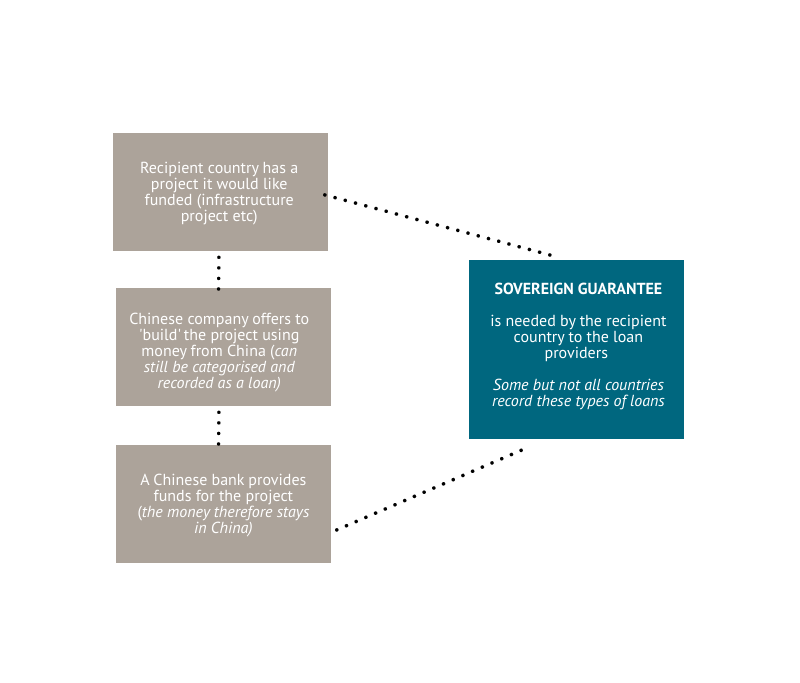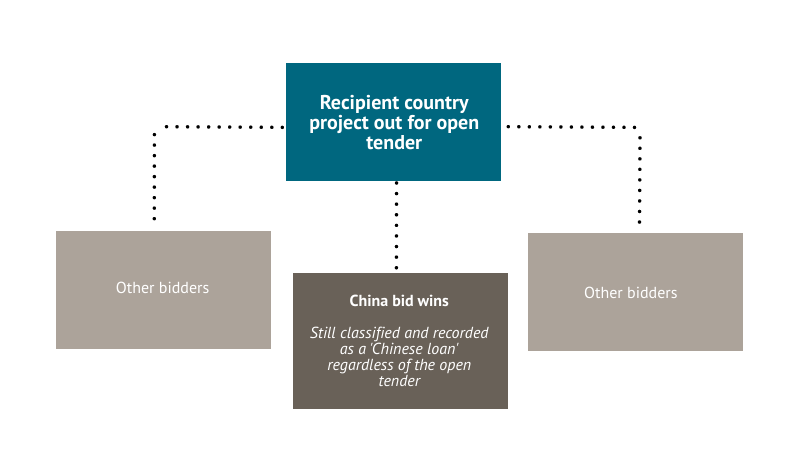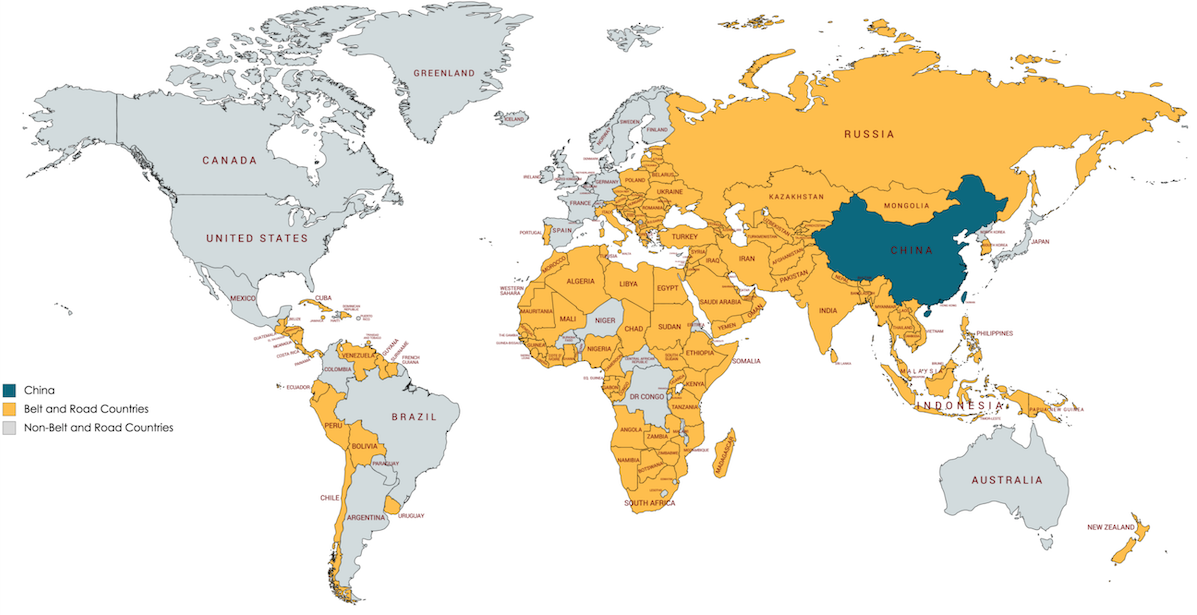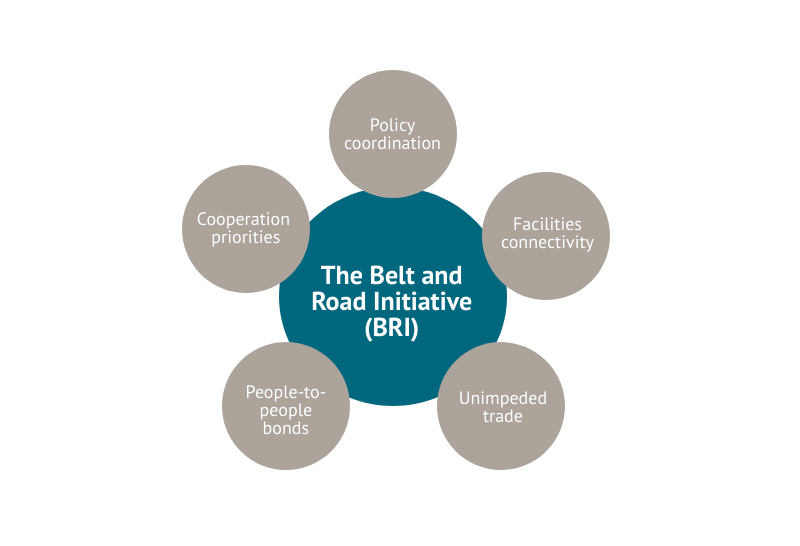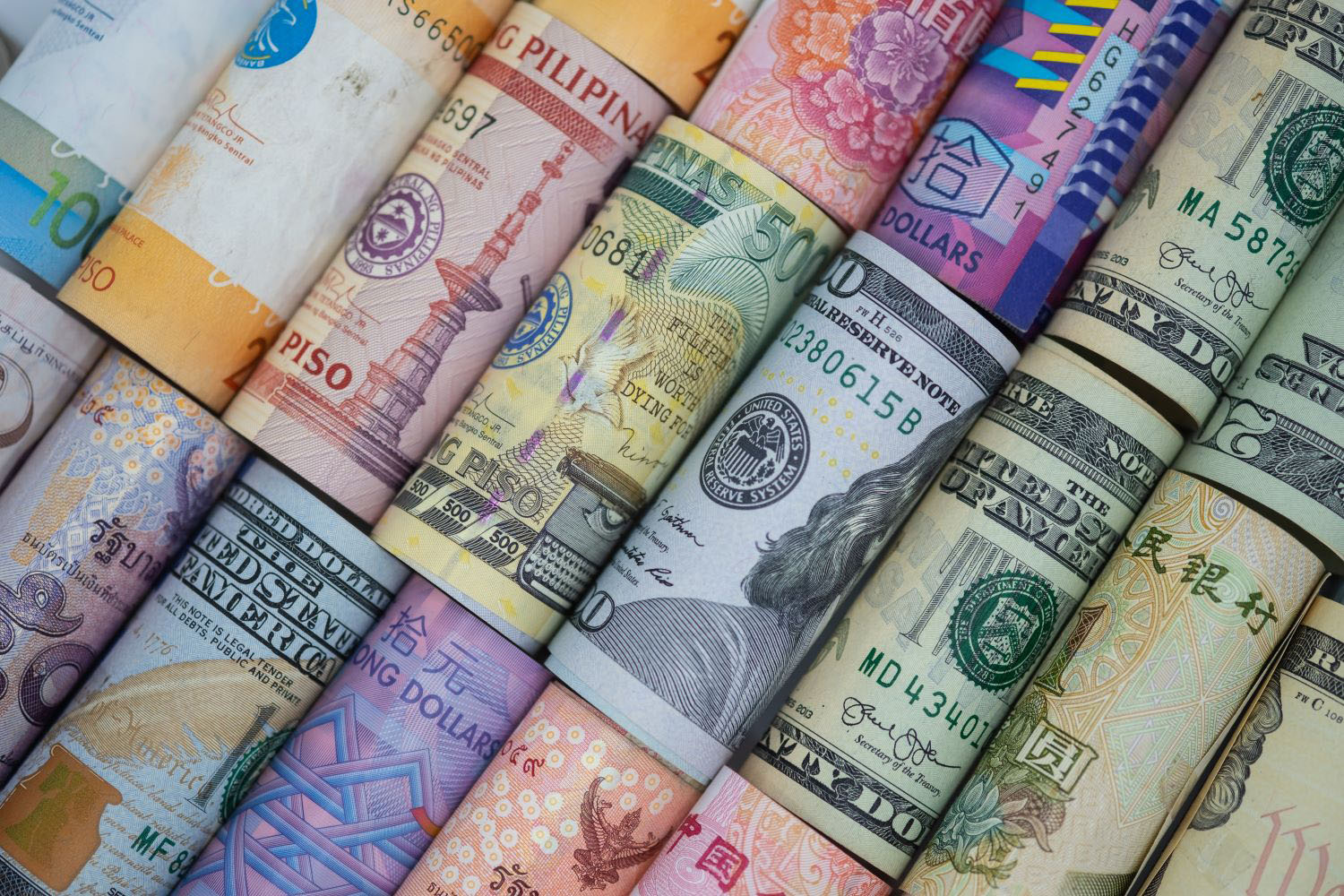Recommended
Summary
Since the 1950s, Chinese foreign aid has been influenced by and linked with China’s investment, trade, and foreign policy objectives. Partly as a result, it has also been fairly opaque. However, as Chinese aid (and loans) have increased in volume and significance, and as China’s economic status has improved, this opacity has become more challenging for recipient countries to manage. The creation of China’s International Development Cooperation Agency (CIDCA) in 2018 can be seen as a concerted move by China to allay these concerns by making a stronger commitment towards a clearer distinction among the various types of Chinese financial flows. However, it remains difficult for recipient countries to navigate the system.
This note aims to help recipient countries understand Chinese aid management and structures by providing an overview of those structures and what they mean for the future of aid from China. The note takes into account two key shifts in Chinese aid management in recent years: the formation of CIDCA, and the Belt and Road Initiative (BRI). We hope this note will also be of interest to development practitioners seeking to better engage with China or to learn from China’s experience.
Overview of China’s development cooperation
The Chinese government has reiterated its commitment to making a positive global impact through foreign aid.[1] However, because of definitional challenges (which financial flows count as aid and which do not) and a lack of transparency, China’s aid system is not well understood.
In 2014, China’s aid flows were officially estimated at over $4 billion per year—similar in volume to Canada or Norway, and about a third of the size of the UK’s aid budget.[2] China’s Belt and Road Initiative (BRI)—announced in 2013—is the flagship under which China has made hundreds of pledges to support different countries and regions around the world in different ways. Indeed, China is not just “one actor,” and its financial assistance comes in many forms, not just grants (free) but also interest-free, concessional, and commercial loans of various lengths and foreign direct investment.
The different types of Chinese development assistance
According to the Chinese government, China’s development cooperation is provided in eight different forms:[3]
- Complete sets of projects (also known as “turnkey” or infrastructure-based projects)
- Commodity aid (i.e., equipment, goods, and materials exported to other countries)
- Technical cooperation projects
- Cooperation on human resources
- Sending Chinese medical teams
- Emergency humanitarian aid
- Volunteers programmes
- Debt forgiveness
There are three ways in which Chinese development assistance may be financed:
Grant or a “donation”: Grants or donations are mostly used to help the recipient country government construct social welfare projects such as hospitals, schools, and housing. They are also used to provide goods and materials and emergency humanitarian disaster relief aid, and to train personnel.
Interest-free loan: These are usually provided when recipient countries want to build a “turnkey” project. When China forgives debt, it is often for this type of loan. But these types of interest-free loans can also be provided for other types of projects.
Concessional loan: These loans do carry interest, but at “low” rates. They usually have a grace period of at least two years, and repayments can stretch over 10 or even 20 years. These loans tend to be provided for big infrastructure projects, and they are provided directly by the Export–Import Bank of China (EximBank).
Because aid type does not always map to a particular type of finance, it is possible that Chinese development assistance for a specific project may be provided through more than one type of finance arrangement. For instance, it is entirely possible for a hospital to be “donated” or “provided” and built in a recipient country using a combination of a grant for phase 1 and an interest-free loan for phase 2; for staff to be supplied to it with donations; and for free training to also be provided in China for prospective local staff. The hospital itself may be situated along a road that benefitted from a concessional (interest-bearing) loan the host government took from the Chinese EximBank. This lack of clarity—or this fluidity, from China’s point of view—has important implications for management and reporting down the line.
CIDCA formulates strategic plans but does not implement projects
China is not a member of the OECD Development Assistance Committee (DAC) and classifies itself as a South-South cooperation development partner or provider—not a “donor.” The Chinese International Development Cooperation Agency (CIDCA) was established in March 2018 to manage China’s rising development cooperation in a more intentional and streamlined manner.[4]
Prior to CIDCA, China’s aid was managed by the Chinese State Council, the Ministry of Commerce, and the Ministry of Foreign Affairs, which were tasked with the strategy, oversight, and external engagements related to Chinese aid, respectively. In addition, the Ministry of Commerce’s Department of Foreign Aid managed over 90 percent of China’s bilateral aid funding.[5]
This complex and fragmented web of coordinating and delivering Chinese development cooperation that pre-dated the formation of CIDCA presented a number of internal challenges, in particular: [6]
complex dispersion of foreign aid responsibilities among sometimes competing ministries, resulting in limited coordination and information sharing;
limited oversight and accountability mechanisms for the line ministries and Chinese contractors involved;
misaligned priorities among the different ministries and departments involved;
challenges for the Ministry of Commerce offices in countries in managing swelling numbers of projects and stakeholders;
outdated foreign aid architecture. Despite undergoing significant changes in terms of volume, deployment and objectives since the 1990s, Chinese aid continued to be largely governed by the same policies and processes.
The creation of CIDCA in 2018 was designed to address some—though not all—of these issues.
It is important to note that CIDCA is not an entire “ministry” in the same way that some development agencies are (e.g., the UK’s Department for International Development). Instead, it is subsidiary to ministries such as the Ministry of Commerce. However, overall, CIDCA reports directly to China’s State Council. This makes it unique in the world, including in comparison to other “subsidiary" agencies, such as the US Agency for International Development, the Japanese International Cooperation Agency, and even Brazil’s Agency for Cooperation; unlike these other agencies, CIDCA has an independent administrative structure but at the same time, a limited budget (see below).
CIDCA describes its objectives as “to formulate strategic guidelines, plans and policies for foreign aid, coordinate and offer advice on major foreign aid issues, advance the country's reforms in matters involving foreign aid, and identify major programs and supervise and evaluate their implementation.”
China’s aid model is not entirely managed by one agency. Instead, China’s bilateral aid is delivered by an intra-ministerial collaborative management matrix (see figure 1).[7]
Figure 1. Management process of China’s bilateral aid projects
China’s aid management process goes like this:
First, CIDCA oversees strategy, policy, and project approval. That means all project ideas and feasibility studies must go through and be seen by CIDCA. Project ideas may be generated in China or the recipient country. Chinese aid in most subject areas—for example, agriculture or health—tend to follow a particular “model” that has been used for many years and can be rolled out to different countries on request.
When determining its strategy for different countries or policy/project approval, CIDCA may take into account issues such as existing loans to different governments through EximBank.
CIDCA approves projects proposed for funding and then certain agencies and ministries are responsible for administrating and disbursing the projects. Disbursements for special funds, such as the South South Aid Fund, must be approved by CIDCA.
Once projects are approved, the Ministry of Commerce manages the detailed technical planning and supervision of projects as they are implemented.
Who actually delivers the projects? The agencies that formally report to the Ministry of Commerce, such as the Agency of International Cooperation and the Academy for International Business Officials, and line ministries, such as the Ministry of Health, the Ministry of Environment, the Ministry of Agriculture, and the Ministry of Education, according to their respective specific thematic areas (see figure 2).[8] Institutions such as EximBank also manage Chinese concessional loans.[9]
For a project to proceed, all of these agencies usually must receive a formal “request” from the recipient country government, with a specific letter sent from a minister or senior official (e.g., Director General level) in a recipient country government. This is unlike the practice of many other aid providers, who may sometimes implement projects simply in partnership with local NGOs, local private companies, and other nongovernmental entities.
Figure 2. China’s key bilateral aid implementing organisations
| Acronym | Full Name | Budget from | Function on the ground (incl. types of projects) |
|---|---|---|---|
| AIECO | The Agency of International Economic Cooperation | MOFCOM | Project management and supervision over complete/ turnkey projects and technical assistance projects, in-kind goods/material projects |
| CICETE | China International Center for Economic and Technical Exchanges | MOFCOM | Specialized project management agency for promoting multilateral and bilateral economic and technical exchanges – incl. implementing South South Aid Fund and procurement for CHINAAID donations |
| AIBO | Academy for International Business Officials | MOFCOM | Specialized project management agency for implementing training programmes |
| FECO | Foreign and Economic Cooperation Office | Ministry of Environment (incl. Special Climate Change Fund) | Specialized project management agency for implementing environment and climate change related training programmes and procurement for environmental equipment donations |
| IHECC | China International Health Exchange and Cooperation Center | National Health and family Planning Council | Manages Chinese Medical teams in developing countries; participates in China aid for health systems in cooperation with MOFCOM |
| FECC | Foreign Economic Cooperation Center | Ministry of Agriculture | Manages Chinese Agricultural Demonstration Centres in developing countries; participates in China aid for agriculture systems in cooperation with MOFCOM |
| MOE | Ministry of Education | Ministry of Education | Manages scholarships for students from developing countries; participates in China aid for educational services in cooperation with MOFCOM |
| Hanban | The office of Chinese Language Council International | Ministry of Education | Manages Confucius institutes & responsible for implementing volunteer programs in developing countries |
| CYVA | Chinese Young Volunteers Association | MOFCOM | NGO implementing youth volunteer programs in association with the Communist League of China |
On-the-ground delivery, payment, and oversight within recipient countries, whether for a project financed by a grant, interest-free loan, or concessional loan, is, however, usually performed by Chinese contractors or enterprises.
Currently, for most grants and interest-free loans provided by the Ministry of Commerce or other line ministries, Chinese enterprises or contractors are selected through a competitive procurement process initiated by the Ministry of Commerce or the line ministry. Most grants and interest-free loans are fully managed in China, including payment in China to the contractor. Contractors work on contract-basis and their scope of work differs depending on the nature of the contract. Examples of different types of contracts include “engineering-procurement-construction” contracts, which involve design, planning, construction, monitoring, consulting, and even sometimes evaluation; “procurement-construction” contracts, where other partners handle design and project management; and “build, operate, and transfer” contracts (also known as “localization mode”), where the contractor also plays a role in the use of the facilities or project constructed.[10]
It is possible that under China’s Foreign Investment Law, introduced in 2019,[11] the procurement process may not necessarily be limited to Chinese contractors in the future. Although this is not yet clear, it would be a positive step in the direction of “localisation” and “country ownership” of Chinese aid, which is a key development effectiveness principle.[12]
Figure 3. Chinese aid management in recipient countries
When aid officials do come in at the country level, it is through the Overseas Economic and Commercial Counsellor’s Offices. These are country-level offices of the Ministry of Commerce that usually oversee, amongst other things, the entire Chinese aid program in that country. These Ministry of Commerce country offices usually have one or two staff members. The Chinese embassy or consulate, which are country-level offices of the Ministry of Foreign Affairs, are generally not involved in such oversight, except perhaps at a very high strategic level.
Finally, the process comes back to CIDCA. CIDCA is responsible for evaluating the results of the projects, looking at them as a whole, and feeding the implications back into the planning and strategy process. For example, if several projects have not worked in a country, or certain types of projects are seeming very successful, CIDCA can take account of this, report to the State Council with recommendations for future adjustments, and then deploy this into future strategy.
Loans with China follow separate processes
The exception to the process described above is concessional loans and finance provided to multilateral organisations such as the World Bank. CIDCA’s formal oversight role does not extend to concessional loans or multilateral finance, which is the responsibility of the EximBank and the Ministry of Finance, respectively.
For concessional loans, EximBank is always responsible for project assessment, loan allocation, and recovery, meaning contractors or enterprises are only responsible for actual construction, implementation, and operation[13] (see figure 3).
There are two broad processes whereby China provides concessional loans:[14]
First, a recipient government may ask Chinese authorities (banks) for a loan for a specific project. If agreed by EximBank (or any other Chinese bank, for this matter), such a project will be put out for tender procurement within China to Chinese firms. There are also circumstances in which a Chinese company may offer to pay for a project in a recipient country with a loan from a Chinese bank. Both of these types of loan usually require what is known as a “sovereign guarantee” or some other form of insurance in case of the project faces problems. This is represented in Figure 4.
Figure 4. “Sovereign guarantee” loans model
Second, there are some circumstances where the competitive bidding process in China is NOT used for EximBank loans. For example, sometimes recipient governments might plan for a loan (from China or another development partner) for a particular project, such as a transport or other infrastructure project. The project will be put to tender in-country (not China) as a public process, and a Chinese company may bid successfully for the project.
Figure 5. Open competition in recipient country model
In such circumstances, if the loan comes from EximBank or other Chinese banks, payment to contractors for delivery usually takes place in China.
In addition, as shown in figure 3, the Overseas Economic and Commercial Counsellor’s Offices (ECCs) are expected to oversee and have information about the loans from Exim Bank and any other types of loans or investments from China in a recipient country. This means that if any entity has information on the eight forms of aid from China to a recipient country, it is the ECC in that country. They are crucial to engage with.
CIDCA focuses on MOUs
CIDCA’s work is carried out across seven departments (figure 6), with the Department of International Cooperation taking primary responsibility for the dissemination of data on China’s foreign aid. The Department of Policy and Planning takes on strategy formulation, policy development, and budget management. Two regional departments deal with the formulation of country-level and regional programs and plans across China’s global foreign aid portfolio. The work of the Department of Supervision and Evaluation is as its name suggests, and is notably holistic, supervising and evaluating all programs and plans carried out by CIDCA.[15] Overall, there are under 100 staff in the agency, mainly made up of former Ministry of Commerce, Ministry of Foreign Affairs, and Ministry of Finance officials.
Figure 6. CIDCA’s organising structure
Source: China International Development Cooperation, http://en.cidca.gov.cn/2019-08/02/c_262719.htm
CIDCA’s own budget is limited to mostly administration purposes. According to 2019 official figures, CIDCA’s 2019 budget was US$18 million; the majority of the estimated 2019 foreign aid budget, over US$2.63 billion, is formally allocated to the Ministry of Commerce.[16]
So why might recipient countries engage with CIDCA at all? Is there any need?
The answer is an emphatic yes. To date, the Chinese government has shared limited information on CIDCA, but it is understood that the following “concrete policy items” will be part of CIDCA’s mandate:[17]
- A top-level foreign aid strategy
- A long-term to mid-term policy
- Country-by-country aid policies
- An annual foreign aid plan
- A foreign aid management system
- Foreign aid international cooperation system
- An annual foreign aid budget
- Measures to manage the initiation and approval of aid projects
- A project evaluation system
- A credit rating system for project implementers
- Foreign aid statistics collection.
CIDCA may share more information in the future on how frequently the top-level foreign aid strategy and plan, and the long- to mid-term policy items, will be delivered or shared publicly.[18] It is of note that CIDCA’s responsibilities do not explicitly include sharing foreign aid data. CIDCA has also not confirmed if or how it will share aid data with recipient countries.
CIDCA’s main work to date has focused on organising internally and formally establishing relationships. To date CIDCA has signed “Development Cooperation Agreements” (DCAs) with 29 recipient countries. In addition, CIDCA has signed memorandums of understanding (MOUs) with the Swiss Agency for Development and Cooperation, the Bill & Melinda Gates Foundation, and the Ford Foundation.[19]
It is not yet clear exactly what role the DCAs play. For instance, it is unlikely that China will limit its aid projects to countries with which it has signed a DCA. But what they may signify is a plan for a more holistic and strategic engagement with these countries. Most importantly, they represent a new opportunity for recipient countries to set out their “priorities and demands,” for encouraging more (in volume terms) and better quality development cooperation from China. For example, the MOUs, in principle, could include commitments from China to consult and receive comments on draft country strategies from the signatory country, or to share data and results of grants and loans with the recipient country. However, to date no DCAs have been published, so it is difficult to say whether such precedent has yet been established.
Figure 7. Countries that have signed agreements with CIDCA
Source: Analysis by Development Reimagined, taken from media reports and CIDCA website, correct as of March 2020
Aid—especially grants—play a very small part in the BRI, but the BRI may affect China’s aid
The Belt and Road Initiative (BRI) is having a significant impact on Chinese aid and overall cooperation with other developing countries. Launched by Chinese President Xi Jinping in 2013, the BRI has come to be considered definitive to China’s engagements across the globe, including its development cooperation, thanks to its significant reach and massive projects. Globally, the BRI spans around 140 countries (defined here as the countries that have signed a MOU with China on the BRI), which are together home to two-thirds of the world’s population.[20]This amounts to 62 percent of countries in the Caribbean; 67 percent of South American countries; 42 percent of Central American countries; 100 percent of countries in the Middle East; 97 percent of Asia (India is not signed up to the BRI); 57 percent of Oceania (Pacific); 73 percent of Africa, and 57 percent of Europe (see figure 8).[21] Most importantly, the BRI coves many more countries than CICDA has to date signed MOUs with.
To understand and quantify China’s contemporary and future development cooperation, it is essential to understand the scope of the BRI. This is because development cooperation, particularly China’s, is difficult to untie from trade and investment, especially when long-term development impacts are considered. China has its own definitions of what constitutes foreign aid relative to OECD countries,[22] and BRI-related projects and funds have become an important source of insight on aid by Chinese definitions.
Figure 8. Countries that have signed a MOU on the BRI with China
Source: Countries along the Belt and Road. What does it all mean: https://developmentreimagined.com/2019/09/26/countries-along-the-belt-and-road-what-does-it-all-mean/, Analysis by Development Reimagined, October 2019
The BRI promises new business and development opportunities around the world, connecting Asia, Europe, and Africa in large investment and turnkey projects. The World Bank predicts that, if all proposed BRI projects are completed, they have the potential to increase trade along the six designated BRI economic corridors and maritime “roads” by between 2.7 percent and 9.7 percent, to increase income by up to 3.4 percent, and to help 7.6 million people lift themselves from extreme poverty.[23]
While none of the five areas of BRI cooperation (shown in figure 9) directly or neatly correspond to China’s eight types of foreign aid, China has emphasised that foreign aid is an integral part of BRI cooperation, especially as, to date, BRI financial cooperation has been largely targeted towards developing countries. That said, much of China’s trade and foreign direct investment remains concentrated in developed countries.[24] The importance of the BRI for development cooperation is now further highlighted by its inclusion in CIDCA’s mandate, with the agency expected to support “the joint implementation of ‘Belt and Road’ strategy.”
Figure 9. Five key cooperation areas of the Belt and Road Initiative
Source: Action Plan on BRI, http://english.www.gov.cn/archive/publications/2015/03/30/content_281475080249035.htm
However, China’s internal bureaucracy with regards to the BRI is in some ways even more complex than China’s aid bureaucracy. Since the BRI has a huge infrastructure component, China’s National Development and Planning Commission is key, as is the Ministry of Foreign Affairs because to the foreign policy interest. The Ministry of Commerce is also involved, but CIDCA less so. Finally, China’s provincial governments also play key roles, including financial roles, as they can provide incentives for firms to seek opportunities overseas under the BRI.
At the moment, foreign aid by traditional definitions constitutes the lowest financial volume in BRI-linked projects and funds. Moody’s Analytics estimates that between 2000 and 2014, only 20.5 percent of Chinese lending to BRI countries constituted official development assistance,[25] including humanitarian assistance and new trade and investment economic opportunities. This trend seems set to continue as China continues to deviate from “traditional aid” towards commercially orientated investments, in line with the idea of mutually beneficial development cooperation.[26]
Given its potential impact (direct and indirect) on development cooperation, the availability of transparent and trackable data on BRI projects and funds is essential. However, this remains a challenge for the complex BRI bureaucracy described above. Related to this are the coordination and alignment of BRI projects, which despite being classified under an overarching framework, mask a range of Chinese public and private actors and interests, which are sometimes contradictory and competing.
However, the impact of the BRI on CIDCA and on China’s foreign aid should not be understated. Although often viewed as an initiative to simply promote economic prosperity, the BRI is also a vehicle for China to enhance people- to-people bonds, “win-win cooperation,” and cultural exchange, all of which are financed and interlink directly with China’s development cooperation. The overall long‐term trends in the BRI, therefore, will likely play a role in shaping China’s future foreign aid trends.
For recipient countries, the existence of the BRI reinforces the need to engage regularly and consistently with the Ministry of Commerce’s Overseas Economic and Commercial Counsellor’s Offices as a means to understand the delivery of both BRI and aid. But to influence the future shape and focus of the BRI, engagement in China with the National Development and Planning Commission, the Ministry of Foreign Affairs, and priority provincial governments is key, as well as the Ministry of Commerce and CIDCA.
Recommendations for recipient countries, donors, and other aid providers
The creation of CIDCA can be seen as a concerted move by China to allay concerns about the opacity of its foreign aid, by making a commitment towards a clearer distinction among the various types of Chinese financial flows.[27] At the same time, the BRI indicates a continued scaling up of China’s development flows, though not necessarily aid. More time is needed for CIDCA and the BRI to be framed more directly to addressing recipient country needs. There is still a lack of clarity on the practical results aimed for, and there is a plethora of actors involved. Assuming the structures and BRI incentives in place now remain the same going forward, how can recipient countries and aid providers engage best with China?
When engaging with China, recipient countries should:
Have a dedicated person in capitals responsible for regular and consistent engagement with China, particularly with the Overseas Economic and Commercial Counsellor’s Office.
Check details and negotiate hard on project delivery when signing project agreement letters (e.g., with specific agencies or banks). For instance, although many projects are tied, there is still the opportunity to bring in domestic experience and other conditions to the project.
Ask, ask, ask. Many countries are still unaware of the role of CIDCA, even when signing MOUs. Recipient countries should seek to introduce specific “process-based” clauses in BRI, CIDCA or other MOUs that meet their needs and aspirations.
Take the initiative to track China’s aid flows. Many countries already have aid management systems where lines can be added for major Chinese budget items, possibly differentiated by actor (e.g., EximBank or sector ministries). For example, recipients could differentiate loans that have been subject to tender processes in-country from those tendered in China.
Provide regular feedback to Chinese counterparts. What have been the challenges? How could an aid project have been improved? Feedback supports understanding and change.
When engaging with China, donors and other aid providers should:
Remember to focus on understanding recipients’ experiences of Chinese aid.
Be humble – appreciate and recognise the complexities of Chinese aid and how challenging it is for structures to change in all countries.
Engage with CIDCA early. Trilateral cooperation will now be managed through CIDCA; now is the time to for donor and other aid providers to strategically engage on specific ideas for where their organisation can add value as a third partner.
This paper was commissioned by CGD with authors from Development Reimagined.
Leah Lynch is Deputy Director at Development Reimagined.
Sharon Andersen is a Policy Analyst at Development Reimagined.
Tianyu Zhu is a Policy Analyst at Development Reimagined.
[1] The Logic Behind China’s Aid agency: https://carnegieendowment.org/2019/05/21/logic-behind-china-s-foreign-aid-agency-pub-79154
[2] White paper: China’s Foreign Aid (2014)- Information Office of the State Council: http://english.www.gov.cn/archive/white_paper/2014/08/23/content_281474982986592.htm
[3] Ibid.
[4] The Ins and Outs of China’s International Development Cooperation Agency: https://carnegieendowment.org/2019/09/03/ins-and-outs-of-china-s-international-development-agency-pub-79739
[5] UNDP China Issue Brief ‘Governance System of China’s foreign assistance’ 2019: https://www.cn.undp.org/content/china/en/home/library/south-south-cooperation/issue-brief---governance-system-of-china-s-foreign-assistance.html
[6] The Ins and Outs of China’s International Development Cooperation Agency: https://carnegieendowment.org/2019/09/03/ins-and-outs-of-china-s-international-development-agency-pub-79739
[7] UNDP China Issue Brief ‘Governance System of China’s foreign assistance’ 2019: https://www.cn.undp.org/content/china/en/home/library/south-south-cooperation/issue-brief---governance-system-of-china-s-foreign-assistance.html
[8] UNDP (2015) UNDP (2015)- Demand Driven Data: How Partner Countries are gathering Chinese Development Cooperation Data: https://www.cn.undp.org/content/china/en/home/library/south-south-cooperation/demand-driven-data---how-partner-countries-are-gathering-chinese.html
[9] Huang 2007, China’s Foreign Aid and its Role in the International Aid Architecture: https://link.springer.com/chapter/10.1007/978-1-137-00357-7_6
[10] UNDP China Issue Brief ‘Governance System of China’s foreign assistance’ 2019: https://www.cn.undp.org/content/china/en/home/library/south-south-cooperation/issue-brief---governance-system-of-china-s-foreign-assistance.html
[11] For a helpful overview of China’s new FIL, see: https://www.china-briefing.com/news/china-new-foreign-investment-law-backgrounder/
[12] To understand international development effectiveness principles, see the Global Partnership for Effective Development Cooperation: http://effectivecooperation.org
[13] UNDP China Issue Brief ‘Governance System of China’s foreign assistance’ 2019: https://www.cn.undp.org/content/china/en/home/library/south-south-cooperation/issue-brief---governance-system-of-china-s-foreign-assistance.html
[14] These agreement processes may also apply to some commercial loans from Chinese banks, but oversight is not necessarily the same.
[15] The China International Development Cooperation Website: http://www.cidca.gov.cn/
[16] Figures cited here from: One Year On, the role of China’s International Development Cooperation Administration Remains Cloudy: https://www.brookings.edu/blog/africa-in-focus/2019/04/30/one-year-on-the-role-of-the-china-international-development-cooperation-administration-remains-cloudy/
[17] What China’s new foreign aid rules can and cannot do: https://dialogochino.net/21256-what-chinas-new-foreign-aid-rules-can-and-cannot-do/
[18] Ibid.
[19] See CIDCA website announcements: http://en.cidca.gov.cn
[20] List of Countries who have signed MOU on BRI: https://eng.yidaiyilu.gov.cn/info/iList.jsp?cat_id=10076&cur_page=5
[21] Numbers based on official BRI membership data. Country lists based on UN list of recognised countries.
[22] Foreign Aid with Chinese Characteristics: https://www.merics.org/en/blog/development-coordination-foreign-aid-chinese-characteristics
[23] World Bank- BRI: https://www.worldbank.org/en/topic/regional-integration/brief/belt-and-road-initiative
[24] Johnston 2018: The Belt and Road Initiative: What is in it for China?
[25] Moody Analytics (June 2019)- 6 years on: https://www.moodysanalytics.com/-/media/article/2019/belt-and-road-initiative.pdf
[26] Development coordination: Foreign aid with Chinese characteristics (2018) https://www.merics.org/en/blog/development-coordination-foreign-aid-chinese-characteristics
[27] The Logic Behind China’s Foreign Aid Agency: https://carnegieendowment.org/2019/05/21/logic-behind-china-s-foreign-aid-agency-pub-79154
Rights & Permissions
You may use and disseminate CGD’s publications under these conditions.





